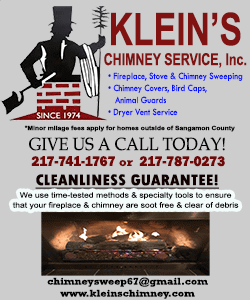NASA poised for historic Artemis I lunar launch from Florida
 Send a link to a friend
Send a link to a friend
 [August 24, 2022]
By Steve Gorman and Joey Roulette [August 24, 2022]
By Steve Gorman and Joey Roulette
(Reuters) - A half century after the end of
NASA's Apollo era, the U.S. space agency's long-anticipated bid to
return astronauts to the moon's surface remains at least three years
away, with much of the necessary hardware still on the drawing board.
But NASA aims to take a giant leap in its renewed lunar ambitions with
the debut launch set for next Monday in Florida of its next-generation
megarocket, the Space Launch System (SLS) and the Orion crew capsule it
is designed to carry.
The combined SLS-Orion spacecraft is due for blastoff from the Kennedy
Space Center in Cape Canaveral, sending the uncrewed capsule around the
moon and back to Earth on a six-week test flight called Artemis I.
"We are go for launch," NASA Associate Administrator Bob Cabana, a
former space shuttle pilot and commander, told a news briefing late on
Monday following the mission's flight readiness review.
The journey is intended to put the SLS vehicle, considered the world's
most complex and powerful rocketship, through a rigorous stress test of
its systems during an actual flight before it is deemed ready to carry
astronauts.

The SLS represents the biggest new vertical launch system NASA has built
since the Saturn V rockets flown during its Apollo moon program of the
1960s and 1970s.
More than a decade in development with years of delays and billions of
dollars in cost overruns, the SLS-Orion spacecraft so far has cost NASA
at least $37 billion, including design, construction, testing and ground
facilities. NASA Administrator Bill Nelson has called the Artemis
program an "economic engine," noting that in 2019 alone, for example, it
generated $14 billion in commerce and supported 70,000 American jobs.
Congress has steadily increased NASA's budget to include funds for
Artemis. Among the greatest financial beneficiaries are the principal
SLS and Orion contractors - Boeing Co and Lockheed Martin Corp,
respectively.
NASA's Artemis program, named for the goddess who was Apollo's twin
sister in ancient Greek mythology, aims to return astronauts to the moon
as early as 2025 and establish a long-term lunar colony as a
steppingstone to even-more-ambitious future voyages sending people to
Mars.
"Even with this delay and increased budget, it is doubtful that NASA
will be landing humans on the moon by 2025, but if all goes well, it
could happen in the next few years," Lori Garver, who served as NASA's
deputy administrator during the rocket's conception, told Reuters.

[to top of second column]
|

NASA's next-generation moon rocket, the
Space Launch System (SLS) Artemis 1, is shown at the Kennedy Space
Center in Cape Canaveral, Florida, U.S. June 27, 2022. REUTERS/Joe
Skipper/File Photo

LUNAR FOOTPRINTS
Twelve astronauts walked on the moon during six Apollo missions from
1969 to 1972, the only spaceflights yet to place people on the lunar
surface. All of those explored regions around the lunar equator.
NASA last Friday announced 13 potential landing zones around the
lunar south pole where it plans to send its new generation of
explorers, including the first woman and first person of color to
set foot on the moon.
A successful SLS-Orion launch is a crucial first step. The towering
spacecraft, 322 feet (98 meters) tall, was slowly trundled to Launch
Pad 39B last week following weeks of final preparations and ground
tests.
Barring last-minute technical glitches or unfavorable weather, the
four main SLS engines and its solid-rocket boosters are set to
ignite at 8:33 a.m. EDT (1233 GMT) on Monday, sending the spacecraft
streaking skyward. Should the countdown be delayed beyond the
two-hour window targeted for liftoff, NASA has set Sept. 2 and Sept.
5 as alternative launch dates.
Following separation from the rocket's upper stage more than 2,300
miles (3,700 km) from Earth, Orion's thrusters are due to fire to
set the capsule on its outbound course, bringing it as close as
about 60 miles (100 km) from the lunar surface before traveling
roughly 40,000 miles (64,400 km) beyond the moon and back to Earth.
The capsule is due for an Oct. 10 Pacific Ocean splashdown.
Orion will be carrying a simulated crew of three - one male and two
female mannequins fitted with sensors to measure radiation levels
that a real-life crew would encounter.
If successful, Artemis I would pave the way to a first crewed SLS-Orion
mission, an out-and-back flight around the moon designated Artemis
II, as early as 2024, followed a year or more later by an Artemis
III trip to the lunar surface.

Artemis III will be much more complex, integrating the SLS-Orion
with spacecraft to be built and flown by entrepreneur Elon Musk's
company SpaceX. Those include SpaceX's heavy-duty Starship launch
and lunar-landing vehicle, still under development, and components
still to be constructed including an orbital fuel depot and space
tankers. Even the new moon-walking suits remain to be designed.
The plan would be for a four-person Orion crew to dock in space with
a SpaceX lander to ferry two astronauts to the moon's surface for
nearly a week.
(Reporting by Steve Gorman in Los Angeles and Joey Roulette in
Washington; Editing by Will Dunham)
[© 2022 Thomson Reuters. All rights
reserved.]
This material may not be published,
broadcast, rewritten or redistributed.
Thompson Reuters is solely responsible for this content. |